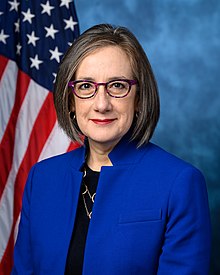From the Desk Of Congresswoman Andrea Salinas

Oregon is experiencing an economic revolution powered by advancements in technology, manufacturing, and infrastructure. The 117th Congress was among the most productive in memory with the passage of the Bipartisan Infrastructure Law, the CHIPS and Science Act, and the Inflation Reduction Act. Together, these bills account for investments of more than $3.4 billion in infrastructure and clean energy in Oregon, and they have spurred private companies to make an additional $3 billion investment in Oregon’s semiconductor, electronics, and biomanufacturing industries. Simply put, they’ve positioned our state to emerge as a 21st century economic powerhouse.
Already, these laws have been meaningful for Oregonians. Even before the CHIPS and Science Act, semiconductor manufacturing was Oregon’s top manufacturing sector. I’m fighting to ensure Oregon’s Sixth District, including Salem, receives its fair share of the CHIPS and Science Act’s $52.7 billion for semiconductor research, development, manufacturing, and workforce development. I’m also focused on expanding science, technology, engineering, and mathematics (STEM) opportunities. Oregonians from marginalized or under-resourced communities have been consistently left out of STEM education and, as a member of the House Committee on Science, Space, and Technology, I’ve been advocating to change that. In fact, earlier this year, I secured bipartisan support for an amendment to make sure that federally funded researchers consider whether the STEM educational approaches they develop are effective for all students. Our workforce is incomplete if it is not inclusive.
The Bipartisan Infrastructure Law has also contributed to the modernization of Oregon’s workforce. Our state is currently home to 395 bridges and more than 1,287 miles of highway that are in poor condition. However, thanks to this law, Oregon commuters can expect that to change as billions of dollars pour into our state and modernization efforts begin. For example, the Federal Transit Administration recently awarded over $6 million to the Salem Area Mass Transit District (SAMTD) to help transition to an electric bus fleet. The scale of the needed repairs to our infrastructure demands an equally large, highly-skilled workforce. That’s why the Bipartisan Infrastructure Law includes more than $800 million in dedicated investments for workforce development. Overhauling outdated infrastructure isn’t just good for the livability of our communities, but for the longevity and resilience of our workforce.
The Inflation Reduction Act looks to supercharge domestic energy production with the ultimate goal of pushing us toward a cleaner future. Tackling climate change isn’t just about spending on new technologies and industries — it’s about creating good-paying jobs for our future. The Inflation Reduction Act does just that. It puts workers first, requiring businesses to pay good wages and offer apprenticeships to access critical tax incentives. Skilled workers in Oregon and across America will power the clean energy economy, and the Inflation Reduction Act ensures that young people can learn the skills they need to contribute to our future.
These laws’ impact will grow over time. However, in the immediate term, there are opportunities for Salem’s workforce and young Oregonians looking to get their career started. Our community and technical colleges – like Chemeketa and OIT – are beacons of progress. Salem is also fortunate to be home to the Salem-Keizer Public Schools’ Career Technical Education Center, which allows young people to jump start their career before graduating high school. Programs like these are vital to the long-term success of our state, and I’ll continue to support policies that allow them to grow and thrive.
Our workforce is rapidly changing. However, with smart investments, we can ensure that those changes are decisively for the better – not just for Oregon, but for all of America.






